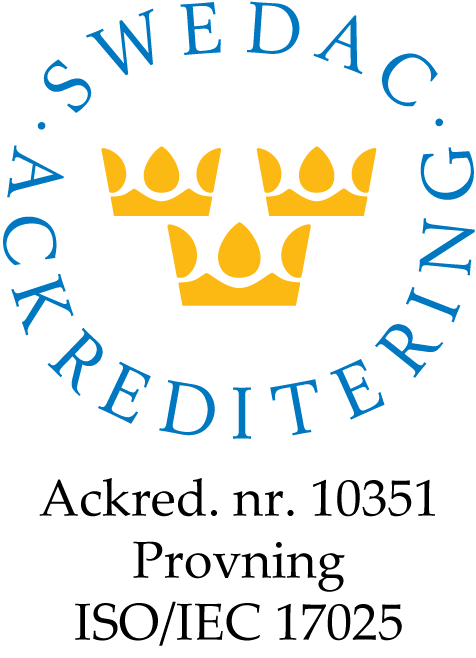Assimilable organic carbon (AOC) in drinking water |
 |
Natural organic matter (NOM) in raw water normally consists of large organic molecules that bacteria have difficulty utilizing for growth. When NOM is exposed to oxidizing agents such as chlorine or chlorine dioxide as well as UV light or ozone during disinfection of drinking water, NOM is broken down into small organic molecules on which bacteria can grow in pipe networks, mainly in biofilms on surfaces in the pipe network. This in turn favors the growth of unicellular animals and thus also the growth of Legionella. An AOC value for outgoing drinking water around 10 µg acetate-C/L (C=carbon) is not considered to pose a risk, but the higher the value above that, the greater the risk of unwanted bacterial growth. A simple way to control the risk of regrowth is to analyze the AOC before and after various steps in the water treatment. It is well documented in scientific literature that chlorine and chlorine dioxide increase the AOC content in drinking water, which in turn increases the risk of regrowth. UV doses of or above 40 mJ/cm2 can also result in elevated levels of AOC and increased growth of culturable and slow-growing bacteria as well as Legionella. Ozone treatments have a significant effect on the formation of AOC.
Method
AOC determination is based on the maximum growth level achieved by pure cultures of Pseudomonas fluorescens P17 and Spirillum NOX added at low levels to a water sample. These are allowed to grow in the water and the concentration is determined by colony counting. Pseudomonas fluorescens P17 primarily utilizes easily metabolizable organic compounds and Spirillum NOX complements P17 through its ability to utilize, among other things, carboxylic acids and oxalates, which P17 does not utilize. The bacteria levels are converted to AOC concentration by using the determined exchange factor "Y" (acetate-carbon for P17 and S.NOX). Readings take place 4 times during a 14-day period plus 2 days for the last cultivation and 1-2 days for initial heat treatment (killing/pasteurization), which means that analysis results are given approximately 3 weeks after sampling. Detection: Theoretically, concentrations of less than 1 µg AOC/L can be detected. In practice, however, a level of 5 µg AOC/L is an actual limit due to low but still possible organic carbon contamination during sampling and other handling. An upper practical limit is 1000 µg AOC/L.
Analysis costs
| Analysis | Price (SEK excl. VAT) |
| Assimilable Organic Carbon (AOC) in drinking water, P17 |
4225 SEK |
| Assimilable Organic Carbon (AOC) in drinking water, P17+NOX |
4975 SEK |
Contact us for more information on sampling and analysis on +46 31 338 32 20 or analys@micans.se
